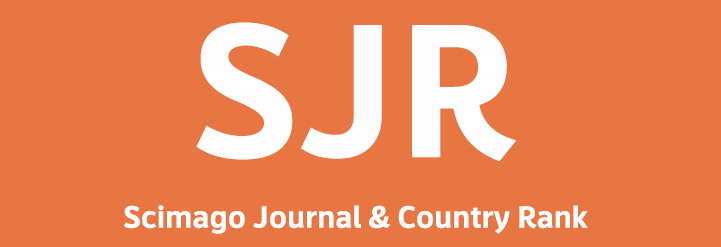Stone Mineral Salt Solution As A Potential Nutrient For Biosurfactant And Biosolvent Production On Meor Application
DOI:
https://doi.org/10.29017/SCOG.32.1.831Keywords:
Stone Mineral Salt Solution, nutrient, biosurfactant, biosolvent, MEORAbstract
Bioproduct from microbial enzymatic activities such as biosurfactant, bioacid, biosolvent, and biopolimer is a useful product in improving oil recovery. The nutrient factors such as the difference and variation of the nutrient, influence microbial growth and enzymatic activities. The objective of this study is to examine the feasibility of Stone Medium Salt Solution (SMSS) as a potential nutrient for biosurfactant and biosolvent production on MEOR application. In the tube test, microbial mixed culture and 3 asphaltic crude oils, tested as C1, C2, and C3, were examined in 0%, 25%, 75%, and 100% SMSS concentrations. The microbial activities were determined by pH, viscosity, and interfacial tension measurements under microaerophilic and aerophilic conditions at 0-day and 7-day incubations. The Microbial Core Flooding (MCF) experiment was measured to observe in field application. The microbial consortia in all crudes had good growth using 100 % SMSS medium. After 7 days, the population increased in both microaerophilic and aerophilic conditions. The interfacial tension and viscosity of all crudes decreased except the viscosity of C1 in microaerophilic condition. The highest decrease occurred in C2 crude, which reduced 51% of interfacial tension and 58.73% of viscosity. Although the result of MCF experiment showed insignificant recovery (only 1.63% from Original Oil in Place), this study proves that SMSS nutrient can be applied in MEOR research by ex situ biosurfactant and biosolvent production for enhancing oil recovery.
References
Astuti, D.I. 2003, Pemanfaatan kultur campuran
isolat mikroba lokal untuk degradasi minyak bumi
dan produksi biosurfaktan. Desertasi. Institut
Teknologi Bandung. Bandung.
Atlas, R.M. 1991, Microbial hydrocarbon degradation
– bioremediation of oil spills. J.
Chem.Tech.Biotechnol. 52: 149-156.
Dibble, J.T and R. Bartha. 1979, Effect of environmental
parameters on the biodegradation of
oil sludge. Appl.Environ. Microbiol. 37: 729-739.
Horowitz, A., D Guitnick, and E. Rosenberg. 1975,
Sequential growth of bacteria on crude oil.
Appl.Microbiol. 30(1): 10-19.
Johnson, M.J. 1967, Aerobic Microbial Growth
at Low Oxygen Concentrations. Journal of bacteriology.
(1):101-108.
Leahy, J.G. and R.R. Colwell. 1990, Microbial
degradation of hydrocarbons in the environment.
Microbiol. Mol. Biol. Rev. 54(3): 305-315.
Liu, G., X. Xu and J Gao. 2003, Study on the compatibility
of ashpaltic crude oil with the electric
desalting demulsifiers. Energy Fuels. 17(3): 543-
McInerney, M.J., M. Javaheri and DP Nagle.
, Properties of the biosurfactant produced
by Bacillus licheniformis strain JF-2. Journal of
Industrial Microbiology and Biotechnology. 5(2-
: 95-101.
NIPPER.1986, EOR Information. (918/336-
Purwasena, I.A., N. Juli and S. Siregar. 2008,
The influence of urea supplementation, initial pH
medium and inoculum size on hydrocarbonoklastic
bacterial activities for MEOR application. Proceedings
of ICMNS 2008. ITB, Indonesia.
Sepahy, A.A., M.M. Assadi, V. Saggadian and A.
Noohi. 2004, Production of biosurfactant from
Iranian oil fields by isolated Bacilli. International
Journal of Enviornmental Science and Technology.
(4): 287-293
Soriano, A.U. and N. Pereira Jr. 2002, Oily sludge
biotreatment. In: IPEC & CESE (Eds.). 9th Annual
International Petroleum Environmental Conference.
Albuquerque, New Mexico.
Sublette, K.L. 1993, Short course on microbial
enhanced oil recovery. Dept. of chemical engineering
univ of Tulsa. USA.
Downloads
Published
Issue
Section
License
Copyright (c) 2022 SCIENTIFIC CONTRIBUTIONS OIL AND GAS (SCOG)

This work is licensed under a Creative Commons Attribution 4.0 International License.
Authors are free to Share — copy and redistribute the material in any medium or format for any purpose, even commercially Adapt — remix, transform, and build upon the material for any purpose, even commercially.
The licensor cannot revoke these freedoms as long as you follow the license terms, under the following terms Attribution — You must give appropriate credit , provide a link to the license, and indicate if changes were made . You may do so in any reasonable manner, but not in any way that suggests the licensor endorses you or your use.
No additional restrictions — You may not apply legal terms or technological measures that legally restrict others from doing anything the license permits.














